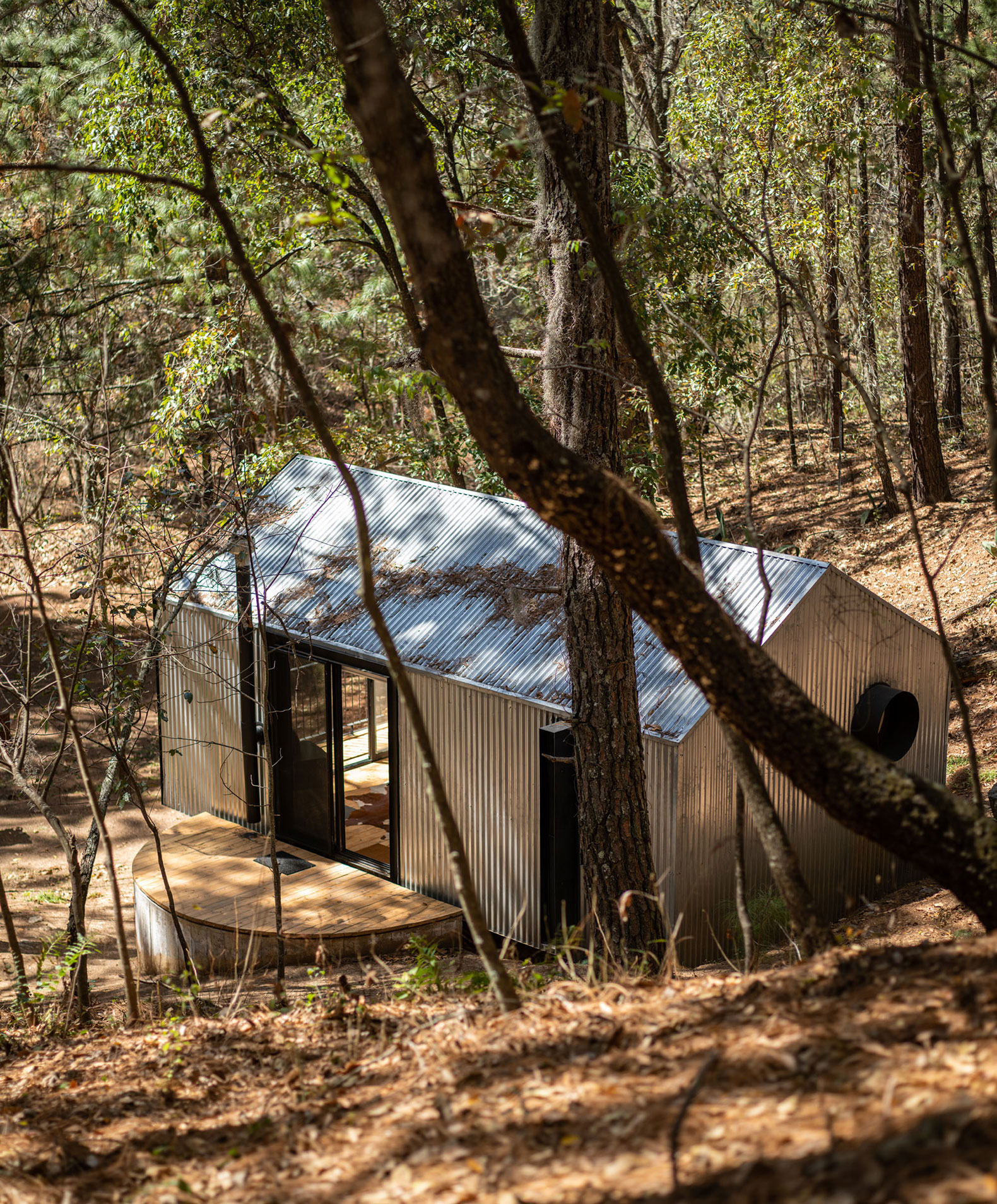The rest cabins are placed just like the bathrooms (enigmatic concrete cubes in the forest), separated from the common spaces on the slopes of the land. In this way, a greater degree of privacy is generated between the different spaces thanks to the forest trees.

Concentric Glamping x The Outlands by S-AR. Photograph by The Raws.
Description of project by S-AR
The project is about connections. First the connection between people and nature through a destination. Secondly to connect different pieces inside a specific landscape, connecting them with their material nature and programs as some pieces depend on others when creating an ensemble. Third, to connect the goodness of protection and security in architecture with the forest's force and apparent unchangingness.
The project has a first stage of a glamping composed by different built pieces in the lower area of a forest terrain in the Sierra de Santiago, Nuevo León, México, located in the outskirts of Monterrey city.
The program is divided into a central platform of common use in a rectangular shape. It holds gathering spaces (dining and campfire) built with a concrete and stone wall, bricks, tree bark as fillers. A multi use room located over a preexisting firm platform from an old terrace (including the old and peculiar chimney in the salon). It is built with a combined structure of steel and wood that aligns lengthwise of the central platform as the kitchen unit made of steel and concrete aligns wide (serving the dining room). Monolithic concrete elements make paths, seats and steps to connect these different pieces physically and visually. Finally, the ensemble is completed by an enigmatic concrete cube in the forest, built further than the other pieces holding the common bathrooms.

Concentric Glamping x The Outlands by S-AR. Photograph by The Raws
The resting and living areas are a series of small cabins (each holding one room, living, bathroom and terrace) and other minimal refugees (room with roof terrace). These are built with a mix of concrete, steel, metallic sheet and wood. The spaces are arranged on the hillsides of the terrain, far from the common areas in aim to obtain greater privacy between the trees of the wooded land.
The chromatic palette of the chosen materials (gray, black, white, yellow, red) fades and is absorbed by the prevailing colors of the forest (brown, dark green, black).
The new abstract pieces lie in the natural millenary forest. They are the first in this new place without local precedent, blend among the enormous nature and these small architectural pieces.















































